Long-range searches have revolutionized rescue operations, offering expanded coverage and enhanced efficiency in remote areas. You'll find that these advanced technologies, like drones and satellites, allow teams to explore vast terrains quickly, increasing the chances of locating missing persons or survivors. They've reduced risks for rescue teams by minimizing exposure to hazardous environments and providing real-time data for better decision-making. Additionally, long-range searches prove cost-effective, streamlining efforts and optimizing resource allocation. With improved coverage, efficiency, safety, and cost-effectiveness, these modern search methods have transformed the landscape of rescue operations. Discover how these advancements are saving more lives than ever before.
Expanded Search Coverage
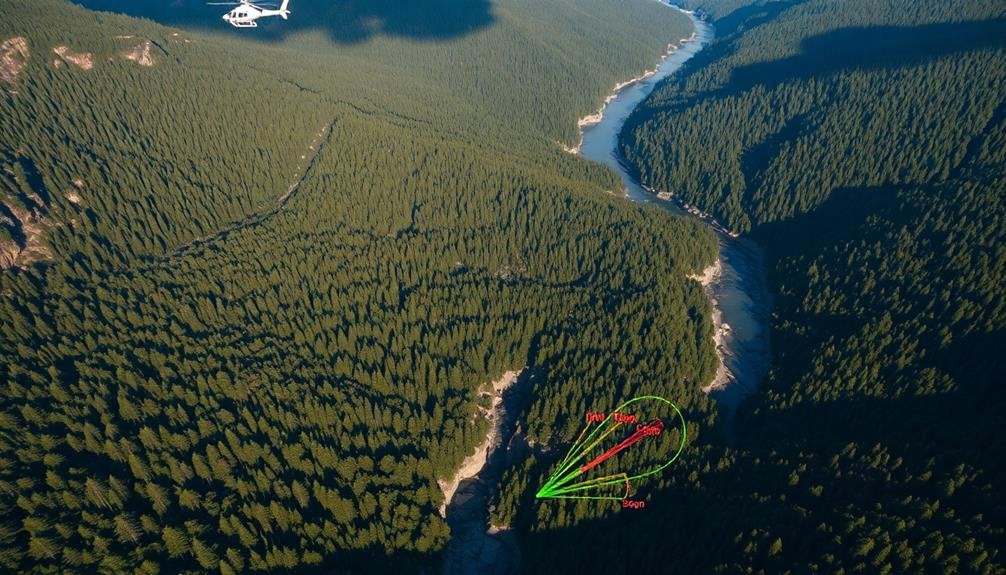
When it comes to long-range searches in rescue operations, expanded search coverage is essential. You'll find that long-range searches markedly increase the area that can be covered in a given time frame.
This expanded coverage allows rescue teams to explore vast terrains, including remote and hard-to-reach locations, that would be impractical or impossible to search on foot or with shorter-range methods.
You'll see how advanced technologies like drones, satellite imagery, and long-range aircraft enable searchers to cover hundreds of square miles in a single day.
This expanded coverage greatly improves the chances of locating missing persons or disaster survivors quickly. It's particularly vital in time-sensitive situations where every minute counts.
Enhanced Efficiency in Remote Areas

Long-range search capabilities don't just expand coverage; they also dramatically boost efficiency in remote areas. When you're tasked with searching vast, isolated regions, traditional methods can be time-consuming and resource-intensive. Long-range technologies change the game, allowing you to cover more ground in less time.
These advanced systems enable you to:
- Quickly identify potential search areas
- Prioritize high-probability locations
- Coordinate multiple search teams simultaneously
With long-range capabilities, you'll reduce the time between initial alert and boots on the ground. Thermal imaging and high-resolution cameras can spot signs of life or debris from great distances, narrowing your search area before you even arrive. This precision targeting means you'll spend less time and fuel reaching the search zone.
In remote areas, where resources are often limited, efficiency is essential. Long-range searches help you maximize available personnel and equipment. You can deploy teams more strategically, focusing on areas most likely to yield results.
This targeted approach not only saves time but also conserves valuable resources like fuel, food, and water. Ultimately, enhanced efficiency in remote areas translates to faster rescues and increased chances of survival for those in need.
Reduced Risk for Rescue Teams
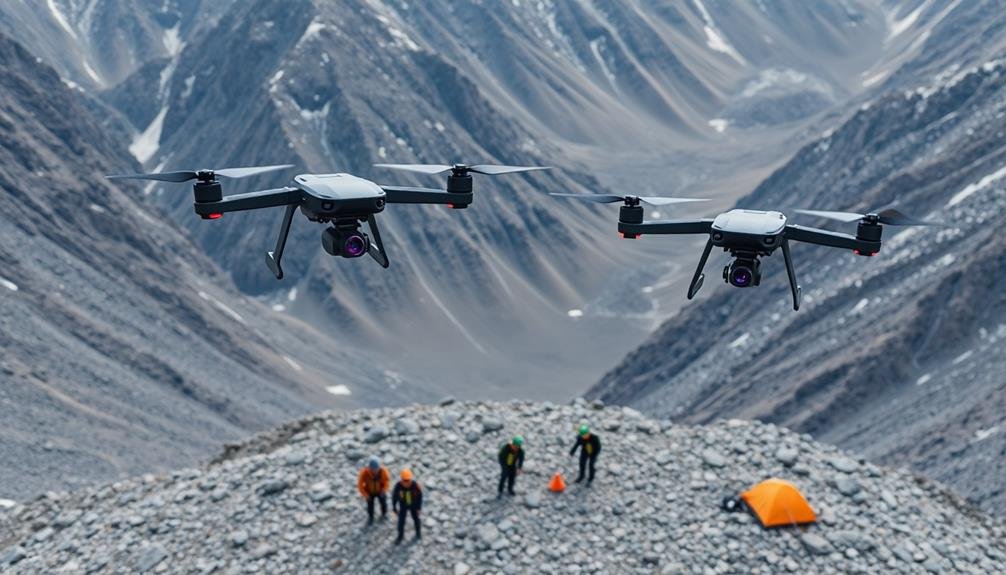
Safety is paramount in rescue operations, and long-range search capabilities greatly reduce the risks faced by rescue teams. You'll find that these advanced technologies allow rescuers to assess dangerous situations from a safe distance, minimizing their exposure to hazardous environments. By using drones, satellite imagery, and thermal cameras, you can gather essential information without putting personnel in harm's way.
Long-range searches also help you plan more effectively. You'll be able to identify potential dangers, such as unstable terrain or extreme weather conditions, before deploying ground teams. This foresight enables you to make informed decisions about resource allocation and approach strategies.
| Risk Factor | Traditional Method | Long-Range Method |
|---|---|---|
| Physical Danger | High exposure | Minimal exposure |
| Time Pressure | Rushed decisions | Informed planning |
| Resource Strain | Inefficient use | Optimized allocation |
You'll appreciate how long-range searches improve communication and coordination. With real-time data at your fingertips, you can guide rescue teams more precisely, reducing the likelihood of accidents or getting lost. This enhanced situational awareness guarantees that you're always one step ahead, making rescue operations safer and more efficient for everyone involved.
Real-Time Data Transmission Capabilities
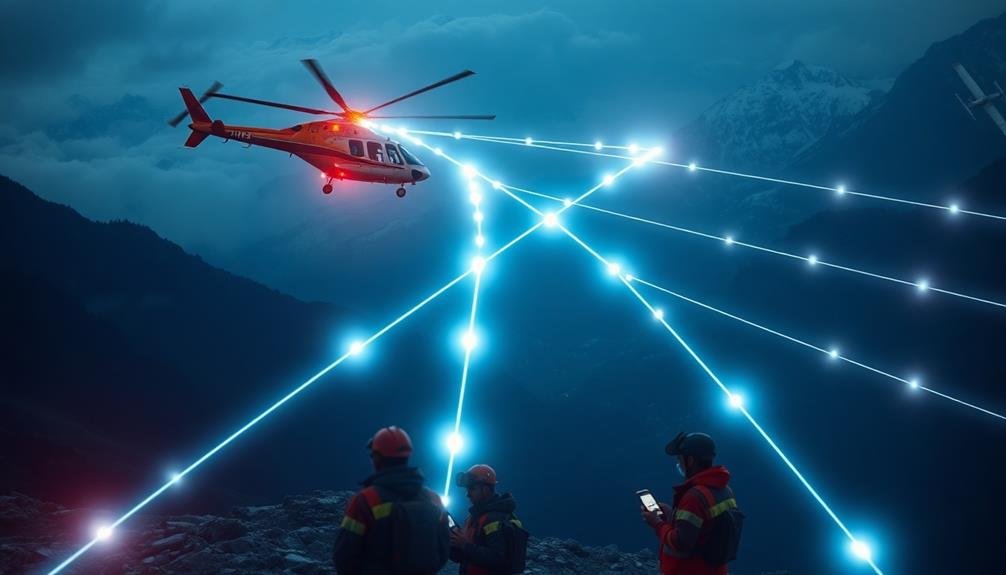
Real-time data transmission is a game-changer in long-range search operations. It allows you to instantly share essential information between search teams and command centers, greatly improving coordination and decision-making.
With this technology, you're no longer relying on outdated or incomplete information, which can make all the difference in time-sensitive rescue missions.
You'll benefit from:
- Live video feeds from drones or ground teams
- Immediate updates on weather conditions and terrain changes
- Real-time GPS tracking of search team locations
These capabilities enable you to adapt your search strategies on the fly, redirecting resources where they're most needed. You can quickly analyze incoming data to identify potential search areas or rule out others, saving valuable time and resources.
Real-time transmission also means you can instantly relay medical information about found survivors to emergency responders, ensuring they're prepared with the right equipment and treatment plans.
Moreover, you can share this data with other agencies or specialists for remote consultation, bringing additional expertise to the rescue operation.
This interconnectedness appreciably enhances your ability to conduct efficient, effective searches over vast areas, ultimately increasing the chances of successful rescues.
Cost-Effective Search Operations
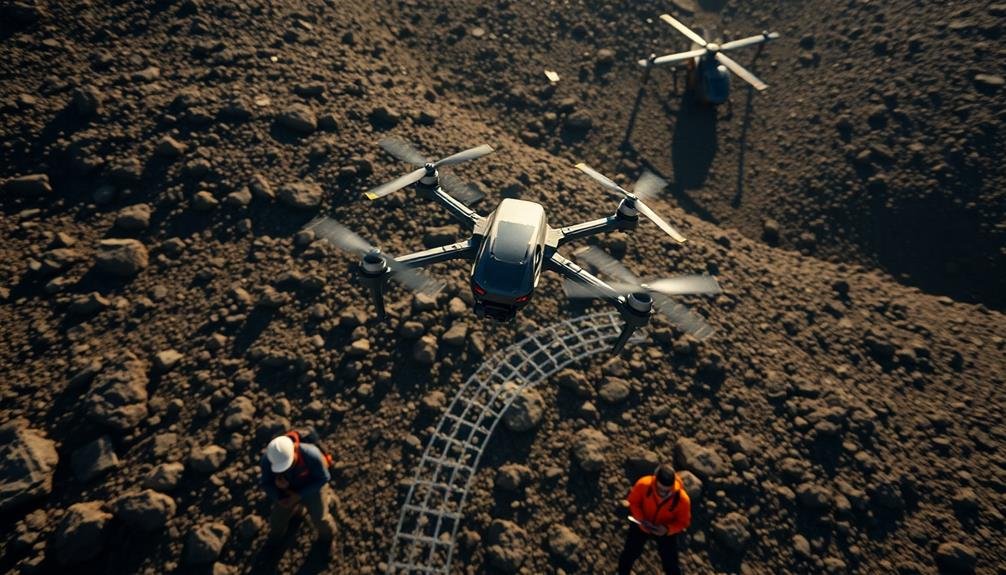
When it comes to long-range rescue operations, you can't afford to break the bank. Cost-effective search operations are essential for maintaining sustainability and maximizing the number of lives saved.
You'll find that investing in advanced technologies like drones and satellite imagery can greatly reduce the need for expensive manned aircraft and large ground crews. By utilizing these tools, you'll cover more ground in less time, cutting down on fuel costs and personnel hours.
You'll also benefit from predictive analytics software that helps pinpoint likely locations of missing persons, streamlining your search efforts. Don't overlook the power of local community involvement, either. Engaging volunteers and utilizing their knowledge of the terrain can be a cost-effective strategy that yields impressive results.
Training your team in multiple disciplines allows for versatility and reduces the need for specialized units. You'll save money by having fewer personnel who can perform various roles.
Additionally, partnering with neighboring agencies for shared resources and equipment can spread costs while improving overall search capabilities. Remember, efficiency in long-range searches isn't just about saving money—it's about saving lives more effectively.
Frequently Asked Questions
How Do Weather Conditions Affect Long-Range Search Equipment?
Weather conditions considerably impact your long-range search equipment. You'll find that rain, fog, and snow can reduce visibility and range. Strong winds may affect drones, while extreme temperatures can interfere with thermal imaging devices' performance.
What Training Is Required for Operators of Long-Range Search Technology?
You'll need specialized training to operate long-range search tech. It includes courses on equipment handling, data interpretation, and emergency protocols. You're also required to maintain certifications and stay updated on the latest advancements in search technology.
Can Long-Range Searches Be Conducted at Night or in Low Visibility?
Yes, you can conduct long-range searches at night or in low visibility. You'll use thermal imaging and infrared technology to detect heat signatures. These tools aren't affected by darkness or poor weather conditions, enhancing your search capabilities.
How Do Long-Range Searches Integrate With Traditional Ground-Based Rescue Methods?
You'll find long-range searches complement ground efforts. They'll provide aerial reconnaissance, guiding teams to specific locations. They can cover vast areas quickly, helping prioritize search zones and identifying potential hazards for ground rescuers.
What Are the Legal Considerations for Using Drones in Long-Range Rescue Operations?
You'll need to contemplate privacy laws, airspace regulations, and operator certifications when using drones for rescues. Don't forget to obtain necessary permits and follow local guidelines. Always prioritize safety and respect for individuals' rights.
In Summary
You've seen how long-range searches revolutionize rescue operations. They'll expand your coverage, boost efficiency in remote areas, and keep your teams safer. You'll benefit from real-time data transmission and more cost-effective operations. By embracing these technologies, you're not just improving search capabilities; you're transforming the entire rescue landscape. As you move forward, remember that long-range searches aren't just an option—they're becoming essential for saving lives in challenging environments.

As educators and advocates for responsible drone use, we’re committed to sharing our knowledge and expertise with aspiring aerial photographers.
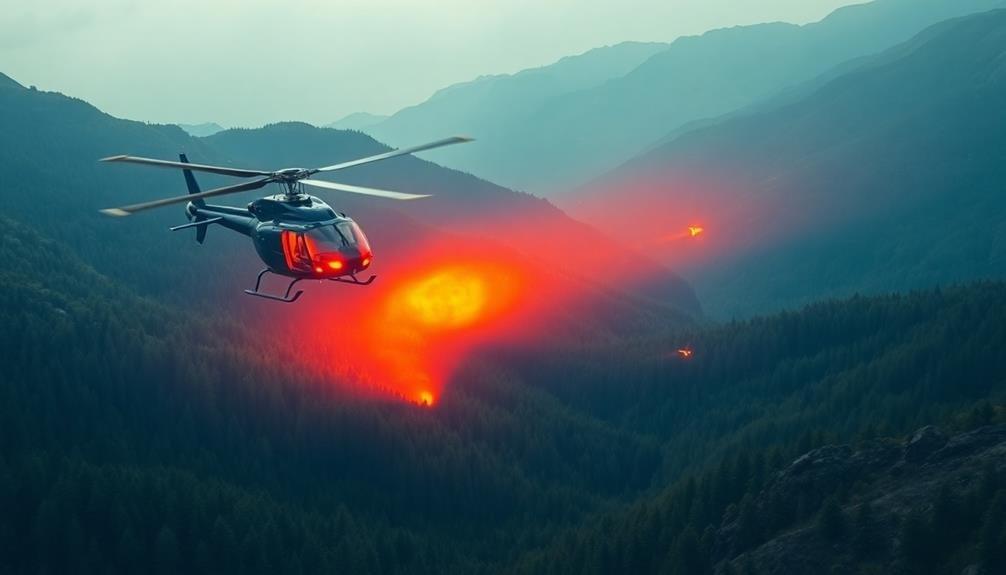


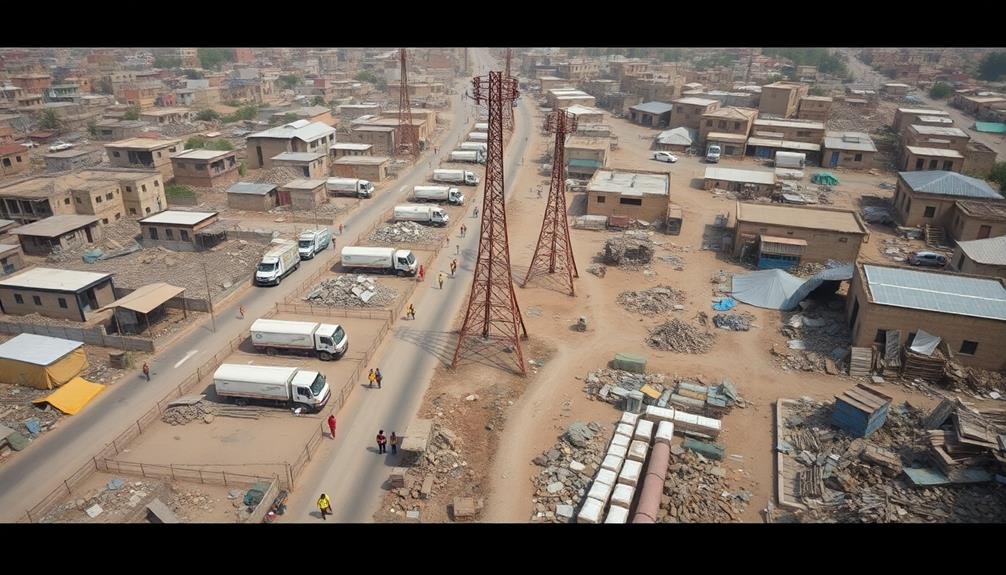
Leave a Reply